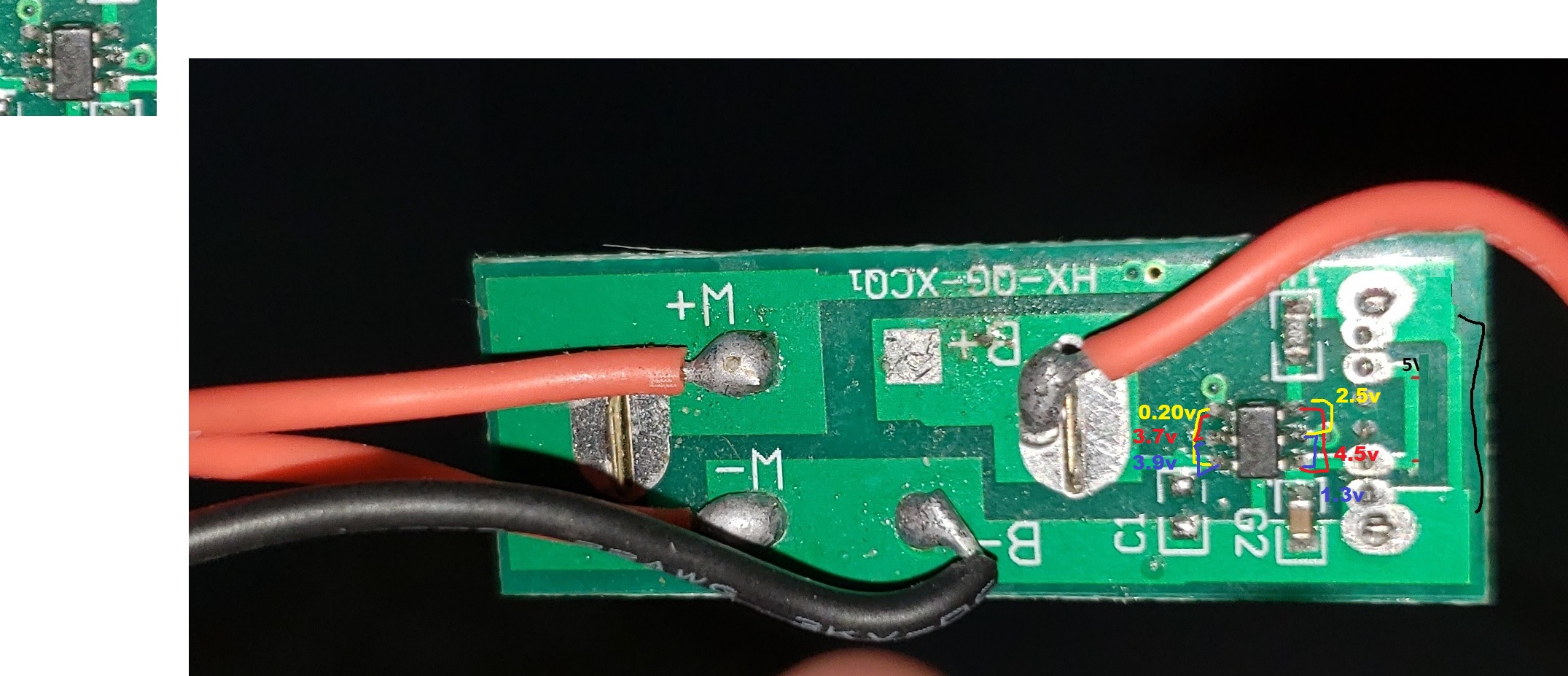I have this USB-C rechargable vacuum cleaner. But 2 months after I replaced the battery for a bigger one (from 1500 to 3000 mah 18650) it is not charging anymore, it used to charge with the latter battery though.
I am so novice in this kind of pcb and even although it looks very simple, I guess the problem is in the IC it says: "5705", how should I check if it's shorted or something is burned?
In M- and M+ I dont know if my multimeter is out of calibration but i reckon it measured 0 ohm (shorted)?






